HTTP Status Codes Explained: A Complete Guide for Website Owners
Recently updated: September 12th, 2024
As a website owner, you may have encountered HTTP status codes before but may not fully understand what they mean or how they impact your site. HTTP status codes are 3-digit numbers returned with every HTTP request, indicating whether a specific URL can be accessed normally or if there is an error.
These codes are important for both website owners and site visitors, as they provide information on whether a page is working properly and if not, what the issue may be. Knowing how to decode status codes can help you debug errors and improve the user experience for your site visitors.
What are HTTP Status Codes?
HTTP is an acronym for Hypertext Transfer Protocol. The World Wide Web uses this protocol and defines the format of messages and how they are transmitted between web servers and browsers.
The first digit defines the class of response, while the last two digits provide a more specific status. For example, 404 indicates a Not Found error, while 200 signals a successful response.
HTTP Status codes help you identify problems when trying to access a web page.
For website owners, regularly monitoring status codes can reveal issues like broken links, server problems, or other errors impacting site visitors. This allows you to address problems and deliver a smooth user experience.
What are the different HTTP Status Code Classes?
The following are the 5 main classes of HTTP status codes:
| HTTP Status Code Categories | Meaning |
|---|---|
| 1xx Informational | 1xx status codes indicate an interim response. This class of statuses doesn’t usually indicate errors but provides information related to the request. |
| 2xx Success | The 2xx class encompasses status codes for successful requests. This indicates the action requested by the browser worked properly. |
| 3xx Redirection | A 3xx status code indicates the client browser must take some additional action to complete the request. This usually means redirecting to a different URL. |
| 4xx Client Error | A 4xx status code indicates an error on the client side prevented the request from being fulfilled. |
| 5xx Server Error | The 5xx class indicates the server failed to fulfill what appears to be a valid request. |
The Role of HTTP Status Codes in Search Engine Optimization (SEO)
HTTP status codes don’t just impact the visitor experience on your site – they also factor into search engine optimization. When Google crawling and indexing web pages, search engines pay attention to status codes.
Getting the non-200-level status codes can raise red flags for search engines. This includes both 4xx client errors and 5xx server errors. If Google keeps encountering 404 pages on your site, it may conclude certain sections lack value for users.
Similarly, continual 500 errors may lead Google to think your site is unreliable or has technical problems. Pages that load inconsistently risk getting crawled less often or even removed from the index.
301 redirects are fine and commonly used in SEO. But excessive 302 or meta refresh redirects could arouse spam suspicions if search engines encounter too many chained together.
To maximize SEO, you want robust 200-level responses across your site. It signals to Google all pages are accessible and providing value to visitors. Checking for and resolving non-200 status codes should be part of any technical SEO audit.
How to Check HTTP Status Code of a Page in Google Search Console
Google Search Console provides a straightforward way to view HTTP status codes for your site’s pages. Here, we have explained the step-by-step process of checking the HTTP status code of your web pages:
- Login to Google Search Console and navigate to the site you want to analyze.
- Click on the “Coverage” button that you will find in the left sidebar.
- Select “URL Inspection” from the drop-down menu.
- In the box, enter the specific URL you want to check status codes for. You can also click the icon next to the box to select a previously crawled URL.
- Click “Run inspection“.
- The “Inspection results” section will populate with details on the page. The status code is shown under the “Last crawled” entry.
- Scan for any status codes other than 2xx. 400 and 500 errors indicate issues that should be addressed.
- Click the “More info” link to see a full timeline of status codes recorded for that page. This helps spot recurring errors.
- Repeat steps 4-8 for any other important pages you want to monitor status codes for. Identifying and troubleshooting errors will improve SEO and UX.
- Once done inspecting pages, click “Back to list” to return to the full coverage report. Review crawl stats and errors.
Running inspections in Search Console provides an easy way to monitor HTTP status codes across your site. Addressing errors and warnings is an important part of technical SEO best practices.
A Complete List of All 63 HTTP Status Codes Explained in Detail
In this section, we will explore all 63 standard HTTP status codes so you can talk to your server like a pro. You’ll learn what each code means when it is used, and most importantly, what to do when one shows up on your site. Here is a list of HTTP Status Codes:
| HTTP Status Codes | HTTP Status Code Messages |
| 1XX (Informational) HTTP Status Codes | |
| 100 | Continue |
| 101 | Switching Protocols |
| 102 | Processing |
| 103 | Early Hints |
| 2XX (Success) HTTP Status Codes | |
| 200 | OK |
| 201 | Created |
| 202 | Accepted |
| 203 | Non-Authoritative Information |
| 204 | No Content |
| 205 | Reset Content |
| 206 | Partial Content |
| 207 | Multi-Status |
| 208 | Already Reported |
| 226 | IM Used |
| 3XX (Redirection) HTTP Status Codes | |
| 300 | Multiple Choices |
| 301 | Moved Permanently |
| 302 | Found (Previously: Moved Temporarily) |
| 303 | See Other |
| 304 | Not Modified |
| 305 | (Unused) Previously: Use Proxy |
| 306 | (Unused) Previously: Switch Proxy |
| 307 | Temporary Redirect |
| 308 | Permanent Redirect |
| 4XX (Client Error) HTTP Status Codes | |
| 400 | Bad Request |
| 401 | Unauthorized |
| 402 | Payment Required |
| 403 | Forbidden |
| 404 | Not Found |
| 405 | Method Not Allowed |
| 406 | Not Acceptable |
| 407 | Proxy Authentication Required |
| 408 | Request Timeout |
| 409 | Conflict |
| 410 | Gone |
| 411 | Length Required |
| 412 | Precondition Failed |
| 413 | Payload Too Large |
| 414 | URI Too Long |
| 415 | Unsupported Media Type |
| 416 | Range Not Satisfiable |
| 417 | Expectation Failed |
| 418 | Previously: I’m a teapot |
| 421 | Misdirected Request |
| 422 | Unprocessable Entity |
| 423 | Locked |
| 424 | Failed Dependency |
| 425 | Too Early |
| 426 | Upgrade Required |
| 428 | Precondition Required |
| 429 | Too Many Requests |
| 431 | Request Header Fields Too Large |
| 451 | Unavailable For Legal Reasons |
| 5XX (Server Error) HTTP Status Codes | |
| 500 | Internal Server Error |
| 501 | Not Implemented |
| 502 | Bad Gateway |
| 503 | Service Unavailable |
| 504 | Gateway Timeout |
| 505 | HTTP Version Not Supported |
| 506 | Variant Also Negotiates |
| 507 | Insufficient Storage |
| 508 | Loop Detected |
| 510 | Not Extended |
| 511 | Network Authentication Required |
1xx HTTP Status Codes (Informational)
The 1xx codes provide status information on initial request processing. Rather than errors, these are provisional responses.
1. 100 Continue
The 100 Continue status code indicates that everything is okay so far and the client should continue sending the remainder of the request. This is used when the initial part of the request has been received by the server, but the full request isn’t complete yet.
For example, when uploading a large file, the client may send the headers first, then the server will respond with 100 Continue before receiving the actual file contents.
If you see this status when requesting a page, it simply means the server got the first part of the request and is ready for the rest. Just allow the request to complete as normal. The full response will come after the entire request has been received.
2. 101 Switching Protocols
The 101 Switching Protocols code is sent when the server is changing communication protocols at the client’s request.
For example, switching from HTTP protocol to WebSockets
The client sends an Upgrade header indicating the protocol it wishes to switch to, and if the server supports it, it will send back 101 and change accordingly.
If you receive 101, your client requested a protocol change supported by the server, so no action is needed. Communication will continue using the new protocol. This allows clients to establish more interactive, real-time connections when needed.
3. 102 Processing
The 102 Processing status indicates the server has received the initial request but the processing is still ongoing. No response is available yet. This prevents the client from timing out while waiting for the response.
When encountered, 102 means the request is being processed but not ready yet. The client should continue waiting until the full response is returned, which may take some time for long operations. No further action is required – just allow processing to complete.
4. 103 Early Hints
The 103 Early Hints status is used when the server wants to provide some early tips to the client on how to preload or render content ahead of the full response. This may include routes to early fetch important links the client will need or details on how to process the eventual content.
If 103 shows up, the server has hints on optimizing page loading before the full HTML is sent. Look for Link headers directing prefetch resources and other details that can inform page rendering. This status helps improve perceived performance. You can leverage the early hints provided.
2xx HTTP Status Codes (Successful)
The 2xx series indicates success and that the request has been accepted and processed properly.
1. 200 OK
It is the standard response HTTP status code for successful HTTP requests. The requested resource has been found and sent back in the response. You need to do nothing. This is the most common code you want to see.
2. 201 Created
This HTTP status code means the request is successful and a new resource has been created. This is sent back after POST requests that create something new like a user account or blog post. It confirms the item was created.
3. 202 Accepted
This code means the request was accepted and will be processed asynchronously in the background. The client should continue to poll the server periodically for status updates.
4. 203 Non-Authoritative Information
This status means the returned metadata is from a third-party copy instead of the original server. It is useful for load balancing.
5. 204 No Content
The server processed the request but has no content to return in the body. It is often sent after DELETE or PUT requests.
6. 205 Reset Content
This code tells the client to reset/refresh the current web page associated with the request. It is typically used after a POST request.
7. 206 Partial Content
This response contains partial content per a range of requests by the client for part of a resource.
8. 207 Multi-Status
It is used for batch/multi-status requests and indicates multiple status codes are being returned for different parts of the response.
9. 208 Already Reported
This status code is used in web-distributed authoring to avoid repeating errors already returned previously.
10. 226 IM Used
When this code appears, it means the server has fulfilled a GET request using the Instance Manipulation Header protocol to optimize caching.
3xx HTTP Status Codes (Redirection)
The 3xx responses indicate the client must take additional action to complete their request. This usually means redirecting the browser to a different URL.
1. 300 Multiple Choices
The 300 Multiple Choices status indicates there are several options available for the requested resource. The response contains a list of links to the various possibilities in the form of URI references. The user-agent or client may then select one of the references and resubmit the request to that URI.
This code allows the server to provide links to different formats or language versions of the content for example. The client can decide which one fits its needs. When receiving 300, the response body should contain the various options to redirect to.
2. 301 Moved Permanently
This is one of the most common redirection codes. The 301 code indicates the resource requested has been permanently moved to a new URI. The Location response header will contain the new permanent URL to redirect to. All future requests should go to this new URL.
When you get a 301, update any links on your site pointing to the old URL. Search engines will also update their indexes to point to the new 301 location. It is like telling someone that your phone number has changed and they should start calling your new number.
3. 302 Found (Previously: Moved Temporarily)
The 302 HTTP status means the requested resource is temporarily located under a different URI. The temporary new location is provided in the Location header of the response. This is similar to 301 but specifies this redirect is only temporary, not permanent.
When encountering 302, you can issue the request to the temporary redirect URL in Location. You don’t need to update links or anything permanent. The resource may move back later. It’s essentially telling the client to ask over there for now.
4. 303 See Other
A 303 response indicates the resource can be found under a different URI using the GET HTTP method. This informs the client to make a new GET request to the URI specified in the Location response header instead of the original request that generated the 303.
This is mainly used when a POST creates a new resource, and the response tells you to now go GET the URL of the new resource to view it. You will need to fetch the Location header and make a new GET request.
5. 304 Not Modified
This response code means the client performed a conditional GET request but the document has not changed since it was last retrieved. Based on the If-Modified-Since request header, the server determined the resource has not been modified. In this case, the cached copy can be used by the client.
When you get 304, it means your cached local copy is still up to date. You don’t need to re-download the content. The resource has not changed so your currently cached version can continue being used as is.
6. 305 Use Proxy (Deprecated)
The 305 status was defined originally to indicate the requested resource must be accessed through a proxy located at the proxy URL given by the Location response header. However, this status code is deprecated due to security concerns of exposing internal proxies.
If you receive 305, that indicates an obsolete attempt to redirect through an internal proxy. It should not be used or relied upon. Modern web standards forbid this behavior so you can disregard this status.
7. 306 Switch Proxy (Deprecated)
The 306 status was a prior way to indicate subsequent requests should use a different proxy server than the one behind the current response. It was intended for switching to a more appropriate upstream proxy. However, this status was deprecated after HTTP 1.1 due to inherent security risks in exposing proxy details.
If this deprecated status appears, you should ignore it and not try to switch proxies. The 306 behavior is no longer supported or recommended due to the aforementioned security issues. Any proxy changes should be configured directly within your HTTP client instead.
8. 307 Temporary Redirect
This status indicates the requested resource is temporarily located under a different URI, which is provided in the Location header similar to a 302. The main difference is a 307 preserves the original HTTP method used on the initial request when redirecting.
A 307 redirect means the resource has temporarily moved like a 302 but when reissuing the redirect request, you should use the same HTTP method as the original call. This prevents POSTs from converting to GETs when redirected.
9. 308 Permanent Redirect
The 308 status is similar to 301 in indicating the original resource URL is now permanently redirected to a new URL provided in Location. The key difference is that 308 preserves the original request method when redirecting unlike 301 code.
When receiving 308, you should update any links pointing to the old URL to the new permanent URL provided in Location, just like a 301. Unlike 301 however, if your original request is POST, you will POST to the 308 URL too.
4xx HTTP Status Codes (Client Error)
The 4xx codes indicate an error occurred on the client side, such as a mistyped URL or invalid request syntax.
1. 400 Bad Request
The 400 status indicates the server cannot understand the request due to invalid syntax. It is a generic client-side error response. It could mean the request headers, body, or routing are poorly formed and the server has no idea how to parse the request.
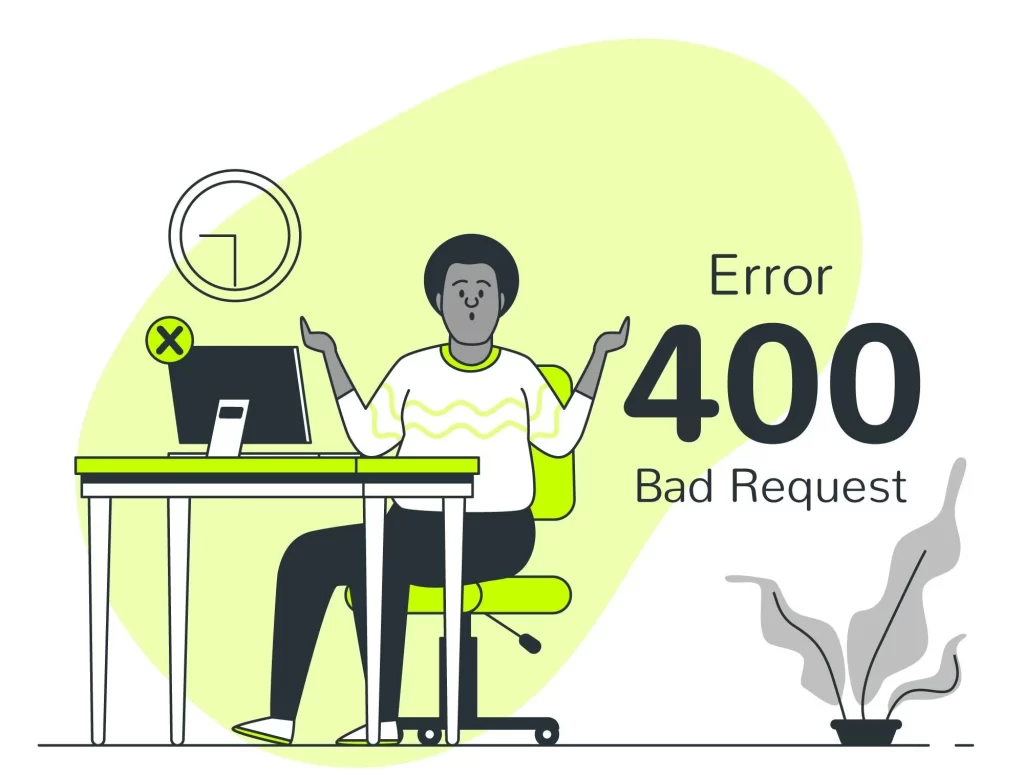
Some common causes are – invalid request message framing, incorrectly typing the endpoint URL, missing required headers or params, sending invalid JSON, CORS issues, etc. 400 errors means you need to fix your request syntax before trying again. So, double-check everything is structured correctly.
2. 401 Unauthorized
A 401 error means the request requires user authentication. This indicates the client either didn’t provide authentication credentials, or the credentials provided are invalid and the access attempt failed.
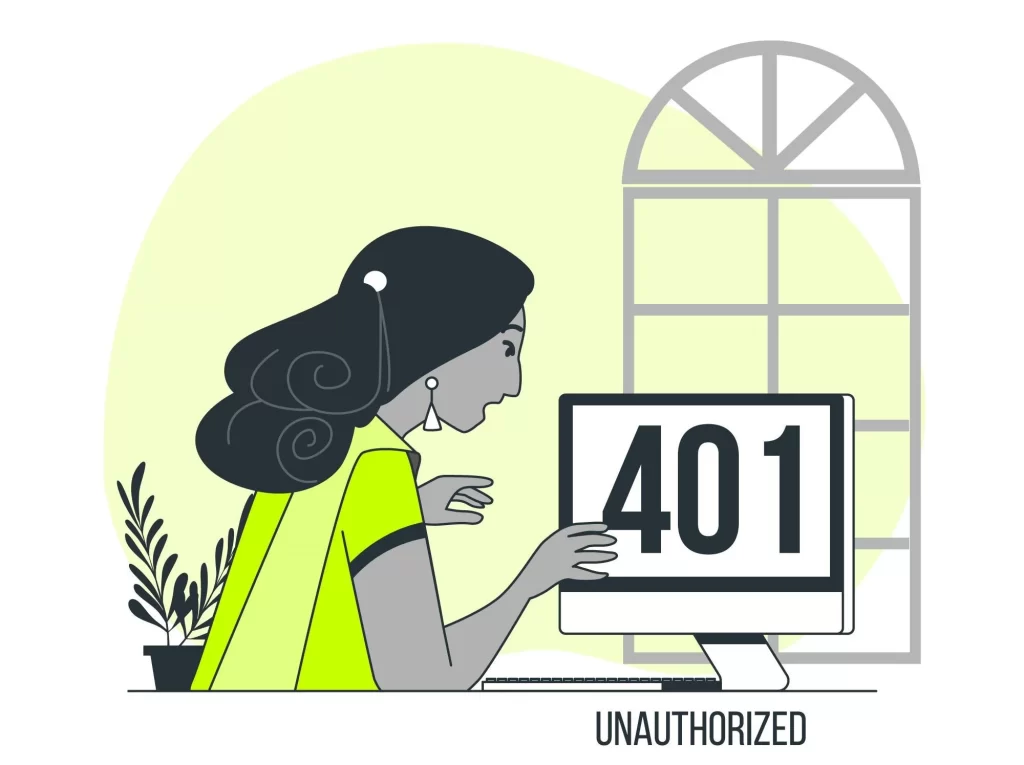
When getting 401, you will need to prompt the user to enter valid credentials in the form of cookies, OAuth tokens, or basic auth. 401 indicates authorization is needed to access the requested resource.
3. 402 Payment Required
This code is reserved for future use. The intention is to use it one day to request payment or monetary authorization to access a resource. However, this status is not widely implemented yet. You may see it used on proprietary APIs or services but general web serving doesn’t leverage it.
4. 403 Forbidden
A 403 forbidden error code means the server understood the request but refuses to authorize it. This is different than 401. With the 403 error, the request is well formed but the client is not allowed to access the resource, regardless of auth credentials.
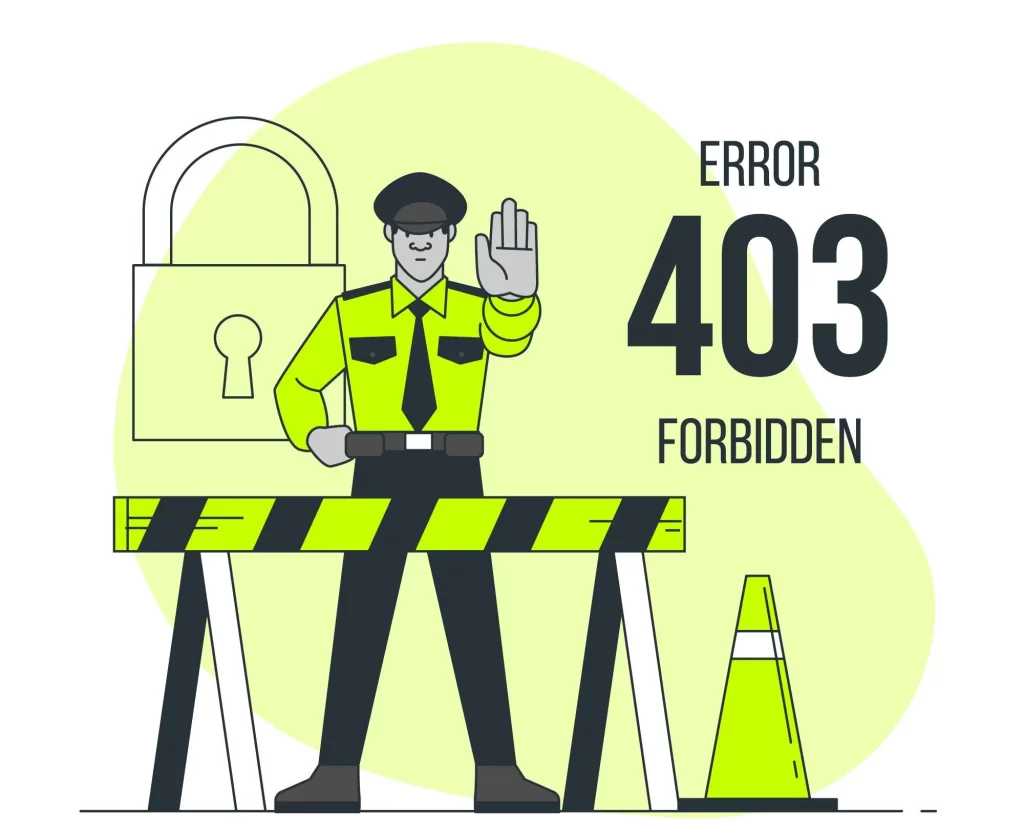
403 can indicate an anonymous user trying to access pages requiring login, or lacking proper privileges and permissions. The resource exists but the client isn’t authorized to perform this operation.
5. 404 Not Found
The most common 404 status indicates the server cannot find the requested resource. This occurs when the URL path doesn’t match any existing content. For example, mistyping the URL, broken links, or requesting a page that no longer exists.
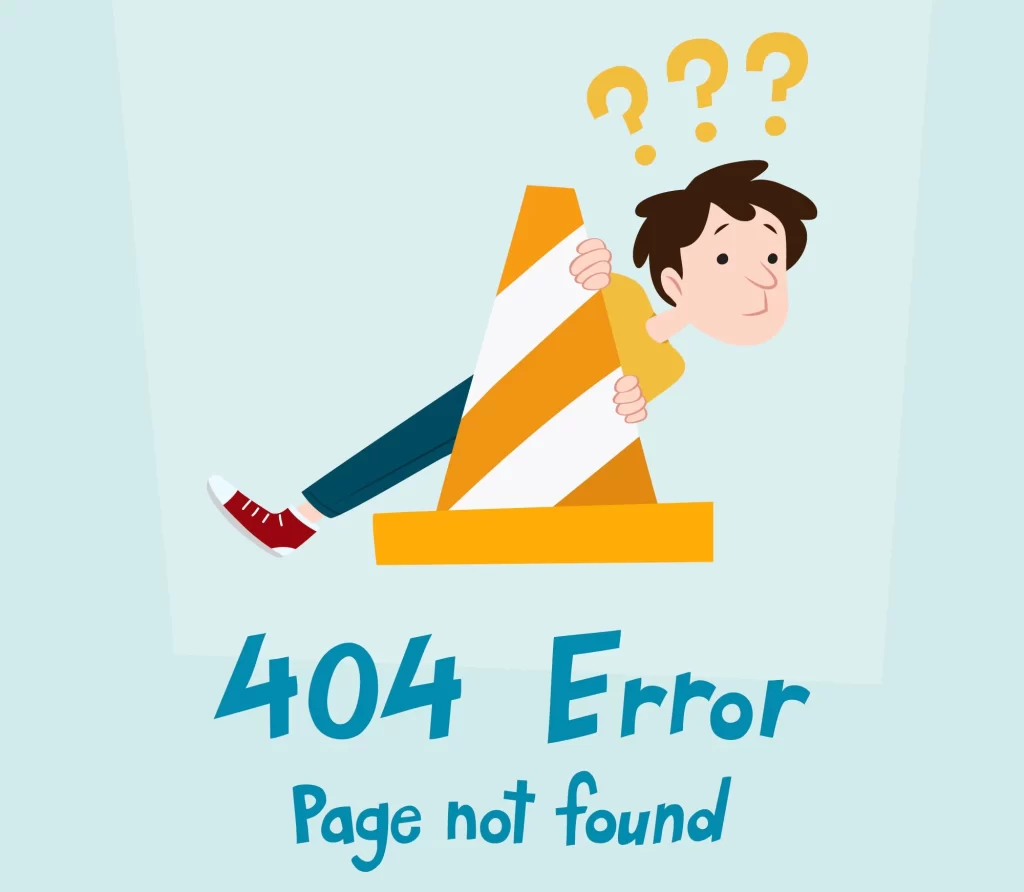
Double-check the URL accessed for any typos when getting a 404. If it looks valid, the resource was likely moved, deleted, or does not exist. 404s are the prime culprit of dead link issues that need to be fixed.
6. 405 Method Not Allowed
A 405 error means the HTTP method used on the request, like GET, POST, DELETE, etc. is not supported for this resource, for instance, making a POST request to an endpoint that only accepts GET requests.
The 405 HTTP status code requires checking that both the endpoint URI and HTTP method being used. Make sure the API supports that method for the given resource. The route may exist but the developer hasn’t enabled that operation.
7. 406 Not Acceptable
This response indicates the resource is present but cannot generate a response meeting the requirements sent by the client in Accept* headers. Typically, this means the server can’t return the content in a requested format like JSON.
406 errors mean the resource exists but cannot be served in the client’s preferred format. Check the Accept headers being sent to ensure the API can return responses in those content types.
8. 407 Proxy Authentication Required
A 407 status indicates the client must authenticate with a proxy server before the request can proceed. Similar to 401 but specifically applied when sent from a proxy rather than the origin server.
To resolve 407 errors, the client will need to provide valid authentication credentials in the Proxy-Authorization header to verify access through the proxy server first.
9. 408 Request Timeout
This error means the server timed out waiting for a request from the client. The client took too long to send the full request and the server gave up waiting. This could be due to network issues or client delays.
408 timeouts indicate check your network connectivity and request timeouts. Increase timeouts as needed to accommodate larger requests. Reduce payload size if the request is very large and taking too long to compose.
10. 409 Conflict
A 409 status indicates a conflict occurred when trying to update a resource. This could happen if the client tries to upload content that would violate constraints on the server, for example, creating a duplicate with a unique key.
409 errors mean the request cannot be completed due to conflicts with the current state of resources on the server. Adjust the request to avoid conflicting states and try again.
11. 410 Gone
The 410 status means the requested resource is no longer available at the origin server. This can happen when a page is permanently deleted and no forwarding address is assigned. The 410 code indicates the resource is gone for good – no routing or redirects will find it.
Unlike 404, 410 means the resource previously existed so links may still reference it – but the content is permanently removed from the server. 410 errors require removing dead links or routes leading to the deleted content.
12. 411 Length Required
This error indicates the server cannot process the request because the Content-Length request header is missing. The content length helps parse message framing, so requests without it will not work.
To fix 411 errors, ensure the Content-Length header is set to the correct number of bytes in the message body. This header is required for the server to know when the body ends.
13. 412 Precondition Failed
The 412 status is sent when the client provides preconditions in headers like If-Match, which evaluates to false on the server side. This causes the request to fail validation before processing.
Fixing 412 errors involves adjusting your conditional request headers to match the expected state on the server. Ensure conditions like entity tags line up with server data to pass validation.
14. 413 Payload Too Large
A 413 error response indicates the request entity payload is too large for the server to process. This could occur when uploading a file exceeding size limits.
To resolve 413 errors, check your server and API upload size limits. Reduce the request payload size by trimming file sizes, fields, or parameters. You may also be able to configure the server to accept larger payloads.
15. 414 URI Too Long
The 414 status indicates the URL requested is longer than the server can process. This prevents arbitrarily long URLs that could cause denial of service issues.
414 errors occur when URL length exceeds the maximum configs on the server or intermediary proxies. To resolve this, check your URL character length and shorten it as needed to an acceptable size. You may also be able to adjust limits on proxies or the origin server.
16. 415 Unsupported Media Type
This error means the media format of the request payload is not supported by the target resource on the server, for example sending an image payload to an API expecting JSON. The Content-Type and Accept headers may not match.
Fixing 415 errors involves double-checking the Content Type of your request body matches what the server endpoint expects. Also, verify that Accept types align with response formats the API provides. Adjust headers for supported formats.
17. 416 Range Not Satisfiable
The 416 status response indicates the client requested a resource range that cannot be satisfied by the server. Typically this happens when range values exceed the size of the target content.
To resolve, ensure the Range and Content-Range header values fall within the actual length of the resource being requested. If trying to resume partial content, verify the correct size and position.
18. 417 Expectation Failed
This error means the server cannot meet the requirements requested by the Expect request header field. The server does not support the expectations requested.
To fix a 417, check the Expect header value and ensure the server supports that functionality. Remove or adjust to supported expectations like 100-continue if issues arise.
19. 418 I’m a Teapot
Initially denoting an April Fools joke, this playful status indicates the server refuses to brew coffee because it is just a teapot and cannot make coffee! Servers may send this code humorously.
20. 419 Authentication Timeout
The 419 status refers to an authentication timeout expiring. This can happen if a user signs in, but takes too long between requests causing their auth credentials to expire and requiring reauthentication.
Fixing 419 errors involves having users reauthenticate if they are inactive for too long. You may also be able to extend authentication timeouts on the server.
21. 421 Misdirected Request
A 421 status means the server will not process the request because it does not match the security context of the intended recipient. This helps prevent misdirected requests from accessing privileged contexts.
To resolve 421 errors, ensure requests are being directed at the appropriate domain and application context having the required privileges. You should also double-check routing.
22. 422 Unprocessable Entity
This response indicates the server understands the request syntax but cannot process the contained instructions. This could occur due to semantic errors like invalid field values.
Fix 422 errors by checking all parameters and inputs match the API’s constraints. The values may be syntactically correct but fail business logic. Adjust inputs accordingly.
23. 423 Locked
The 423 status means the resource being accessed is locked from concurrent requests. This prevents collisions in shared resource editing environments.
When requests receive a 423, some other client holds a lock on the target resource. Your request will be blocked until the lock expires. Consider using If-Match headers to detect stale locks.
24. 424 Failed Dependency
A 424 error indicates that the request failed because a request dependency was needed to process the overall request, for example, if an upload exceeds storage quotas that are necessary to complete the request.
To resolve 424 issues, accommodate dependent resources that are constrained before making broader requests. For example, increase storage for uploads before allowing requests if near limits.
25. 425 Too Early
This status means the server requires the client to wait before replaying the request, as it could still be processed within the server’s optimistic concurrency control.
Simply wait the required time when getting a 425 and replay the request later. This prevents duplicating requests while existing ones may still be in progress on the server side.
26. 426 Upgrade Required
The 426 error indicates the server refuses to perform the request under the client’s current protocol version but would happily do so under an upgraded major version.
To resolve 426, the client should upgrade to a newer supported HTTP version when possible and reissue the request. The server cannot fulfill it under the currently requested version.
27. 428 Precondition Required
This status indicates the server requires this request to contain a precondition like an If-Match header. Responses will fail 412 if sent without proper validation preconditions.
Fixing 428 errors involves adding precondition headers like If-Match to validate request integrity before processing. Ensure necessary checks are present.
28. 429 Too Many Requests
A 429 means the client has sent too many requests and should throttle back. This is used for rate limiting to prevent overload. The Retry-After header indicates when to re-query.
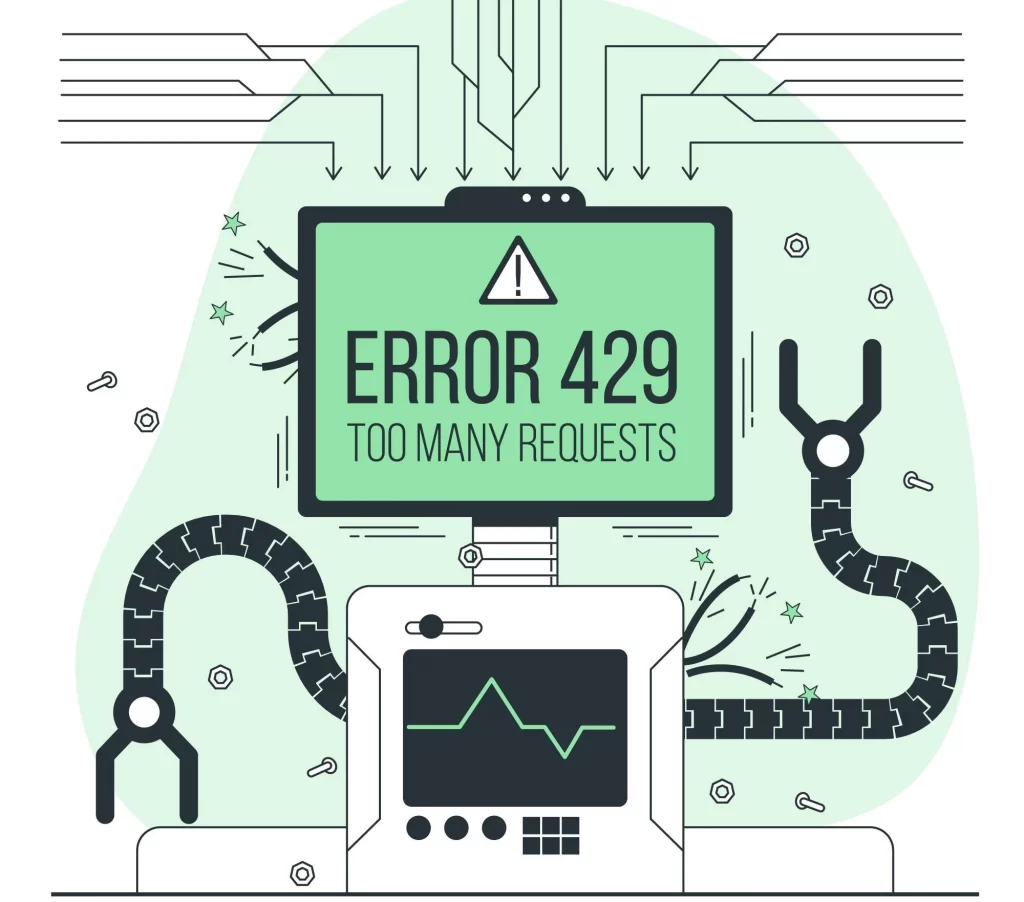
Resolve 429 errors by reducing request volume and retrying after the time indicated in Retry-After. Implement exponential backoff and don’t flood servers causing repeated 429s.
29. 431 Request Header Fields Too Large
This 431 error indicates the request header size exceeds the server’s limits. The headers are too large to be processed.
To fix, reduce the number and size of headers if possible to fit within server allowances. You may be able to increase server header size limits as well in some cases.
30. 451 Unavailable For Legal Reasons
The 451 status is used when the server cannot provide access to the requested resource due to legal restrictions placed on it. This may occur due to censorship or government-mandated blocking.
Unfortunately, 451 errors mean the content you are requesting has been legally blocked and the server operator cannot serve it. The resource is inaccessible due to local laws or policies.
5xx HTTP Status Codes (Server Error)
The 5xx codes imply a server-side problem prevented fulfilling what seemed to be a valid request.
1. 500 Internal Server Error
The 500 status code indicates a generic server-side error occurred preventing the request from being fulfilled. This is a general catch-all error when no more specific 5xx code applies.
500 errors mean something unexpected went wrong on the server side. The application may have crashed, thrown an exception, become overloaded, or encountered an edge case the developers didn’t plan for.
The issue will likely require a backend investigation to determine the root cause. Check server logs to debug what happened. 500s can arise from unhandled defects, inadequate computing resources, or unexpected edge cases.
2. 501 Not Implemented
A 501 error shows the server does not support the HTTP method used in the request. For example, the API endpoint has not been implemented to handle POST requests, only GET.
501 errors mean the developers have not built out the endpoint code for that operation yet. Check the API docs for supported methods. You may need to wait for them to add support.
3. 502 Bad Gateway
This status indicates the server was acting as a gateway or proxy and received an invalid response from the upstream origin server it was trying to access.
502 errors mean the proxy server got a non-200 status when trying to fulfill the request upstream. This could indicate a connectivity issue or problem with the origin. Check if the origin is down and ensure network links are operating properly.
4. 503 Service Unavailable
A 503 status means that the server is not available temporarily to handle or service the client’s request. This could occur if the app is down for maintenance or crashed due to overload.
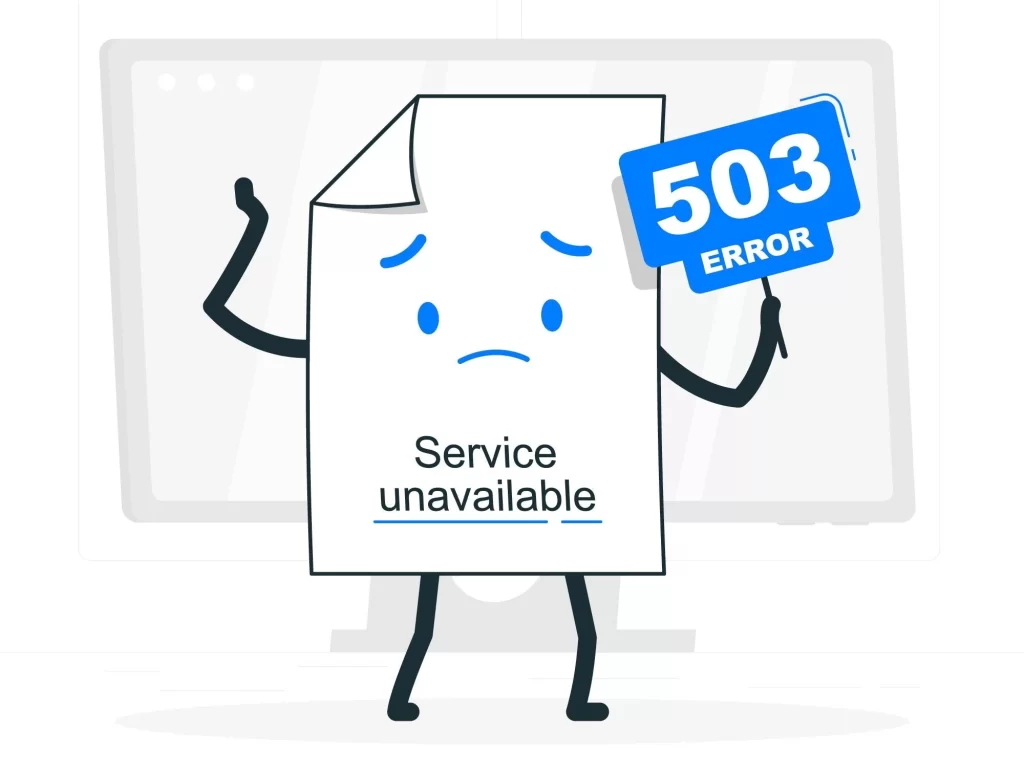
503 errors means the client should wait and retry the request later. The application is not accessible right now but may recover on its own. Most 503s are temporary if occasional. Frequent 503s indicate capacity issues.
5. 504 Gateway Timeout
This error occurs when the server is acting as a proxy or gateway and does not receive a timely response from the upstream origin server it needs to access. The upstream server took too long to send back a response.
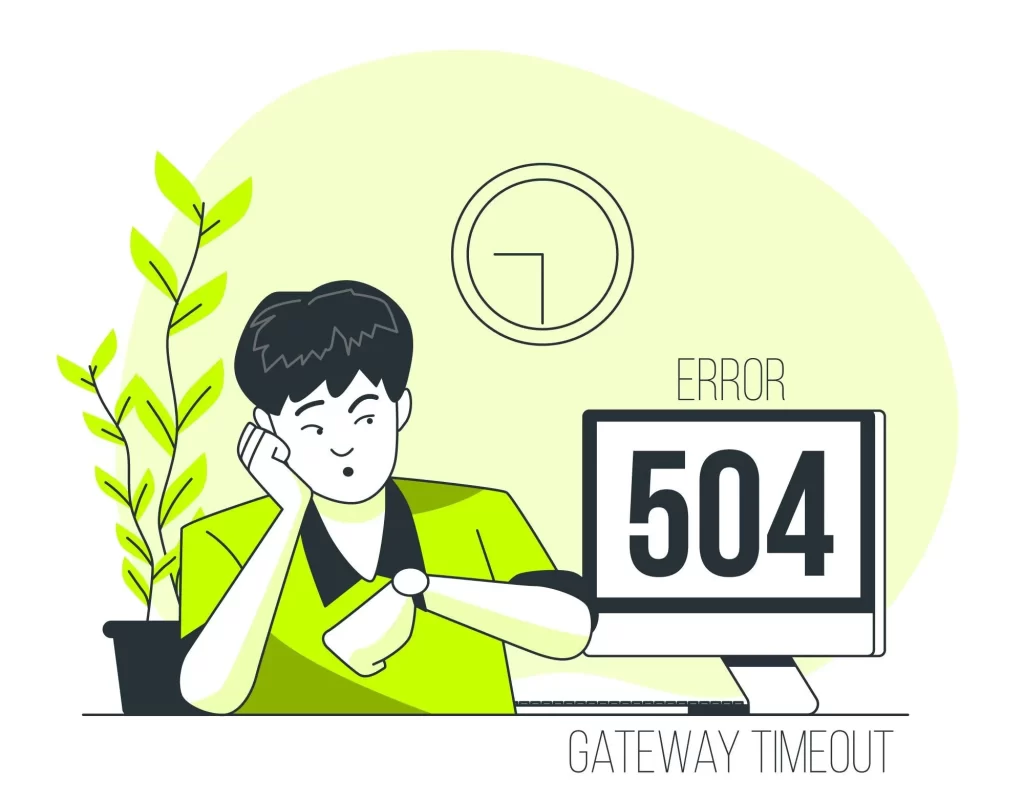
504 timeouts mean the proxy is having connectivity issues reaching the origin. Check for network disruptions or throttling. Increase timeout thresholds if requests/responses take longer.
6. 505 HTTP Version Not Supported
The 505 status code indicates the HTTP protocol version used in the request is not supported by the server. For example, requesting HTTP/2 when the server only supports HTTP 1.x.
To resolve 505 errors, check that both the client and server applications support the same major HTTP versions. Upgrade either as needed to align on a compatible protocol version.
7. 506 Variant Also Negotiates
A 506 error shows the server detected an internal configuration error of “transparent content negotiation.” This relates to conflicts between variant resources available and the negotiation process.
This is a non-standard status not frequently used. It generally indicates a server-side configuration issue versus a client problem. Update negotiation settings to resolve conflicts.
8. 507 Insufficient Storage
The 507 status code indicates the server cannot store something from the request due to insufficient storage capacity. For example, if an upload would exceed the remaining free space.
507 errors mean the server needs more storage allocated. Increase storage capacity and available disk space as necessary. You may also need to impose upload size limits to prevent excess use.
9. 508 Loop Detected
This status indicates the server encountered an infinite loop while processing the request. This could occur with recursive API calls or repeating Chains of proxy forwards/redirects.
508 errors mean the server aborted to avoid an infinite loop. Simplify request logic with recursion caps and avoid excess proxy chaining. Rework code logic creating accidental loops.
10. 510 Not Extended
A 510 response indicates the server requires the client to provide more specifics or clarification in extending the request headers for the server to be able to understand and process the request accurately.
To resolve 510 issues, ensure the client request provides full extended details of headers, attributes, and parameters needed for the server to fulfill it unambiguously.
11. 511 Network Authentication Required
The 511 status indicates the client needs to authenticate with the network first before gaining the Internet access required to make the request. This is similar to 407 proxy auth, but failing at the broader network level.
The 7 HTTP Status Codes You Must Know for SEO
Whether you are a website manager or SEO professional, it is a must for you to know about essential HTTP Status codes that impact the visibility, traffic, or crawlability of your website. Here are some important HTTP status codes that matter a great deal for search engine optimization.
- 200 OK responses indicate pages are returning content properly, which is ideal for SEO. Google wants to see 200s to know your site is working well.
- 301 redirects are useful for signaling moved pages. Search engines will pass link equity to the new 301 destination. Use for permanent URL changes.
- 302 temporary redirects pass no equity. Use these sparingly to avoid confusing search bots. Excess 302s can seem suspicious.
- 404 errors mean pages are not found. Google will eventually deindex URLs returning frequent 404s. Fix or remove broken links.
- 410 gone errors are like 404s but indicate the page did previously exist. Remove obsolete 410 links entirely.
- 500 server errors suggest technical problems. Pages returning 500s risk poor crawling and indexing. Fix unreliable sections of your site.
- 503 timeouts also indicate technical issues. Frequent 503s could lead to pages being temporarily deindexed until stable. Improve server response times.
Monitoring status codes helps diagnose site health and technical SEO issues before they escalate. Addressing errors also improves user experience which indirectly boosts rankings.
How to Fix 404 Errors (Not Found)?
404 errors occur when a requested URL path does not match any existing resources on the server. There are a few common ways to resolve these “page not found” issues:
- Review site analytics and crawlers to identify the sources of 404s. Check for broken links or unexpected user behavior redirecting to non-existent pages.
- For invalid links, make corrections to point to the proper URLs. Use redirects if pages are moved to new locations.
- If pages were intentionally removed, install 301 redirects to route users to relevant alternative content.
- For random invalid URLs, consider implementing custom 404 error pages that provide helpful navigation and site search to aid users.
- Set up 404 monitoring in your CMS or analytics platform to quickly detect and address new issues over time.
Addressing 404s improves user experience by preventing dead ends and directing users to functional pages. It can also improve SEO by fixing broken links and redirects.
How to Fix 503 Errors (Service Unavailable)?
503 errors indicate server overload issues where the application is unable to handle incoming request volume. Strategies for improving uptime during traffic spikes include:
- Increase computing capacity by adding server resources to handle more load
- Optimize databases and code to reduce resource strain
- Implement request throttling and caching to lighten demand
- Distribute requests across servers using load balancing
- Profile traffic patterns to limit maintenance downtime to lower-traffic periods
- Set up auto-scaling groups to dynamically add capacity when needed
- Communicate issues transparently to users until resolved
Conclusion
HTTP status codes provide valuable information on the availability and accessibility of web pages. As a website owner, staying on top of HTTP status codes can help identify and resolve problems faced by both users and search engine crawlers.
While all response status codes may seem minor, they directly impact the user experience and search engine visibility of a site. By leveraging tools like Google Search Console to monitor status codes, Google webmasters can troubleshoot errors and optimize technical SEO.
Latest posts by Vijaya Tyagi (see all)
How To Track Shopify SEO Performance & Metrics (2025) - January 14, 2025
Link Building Strategies: The Ultimate Techniques for 2025 - December 31, 2024




